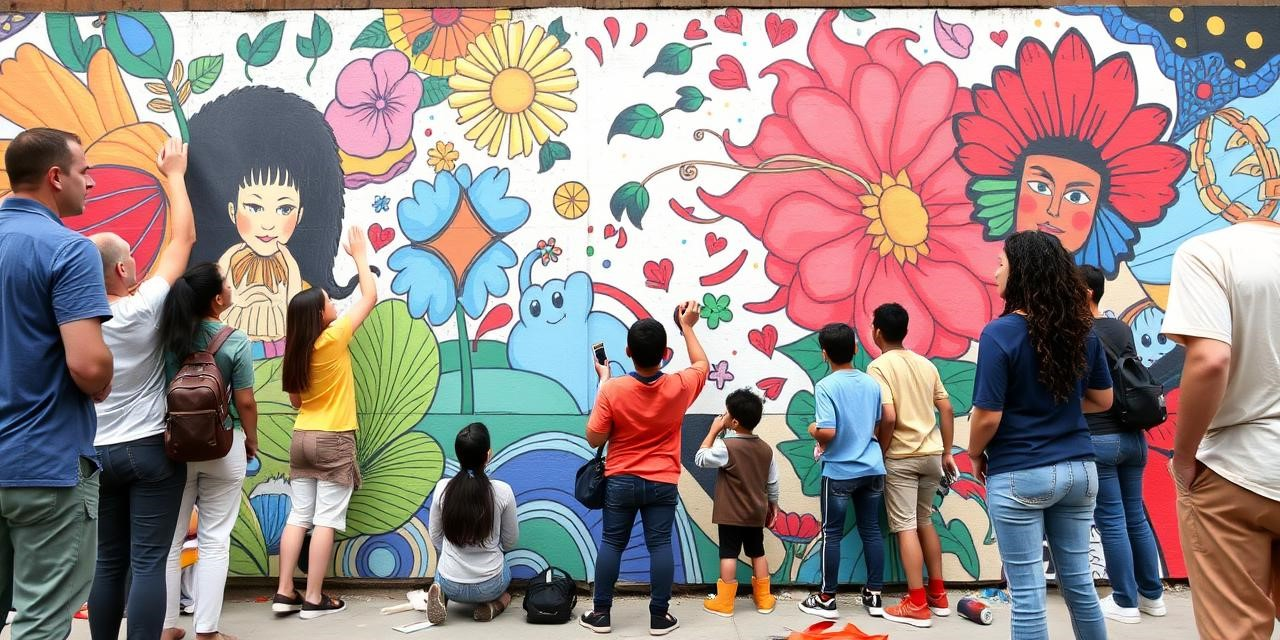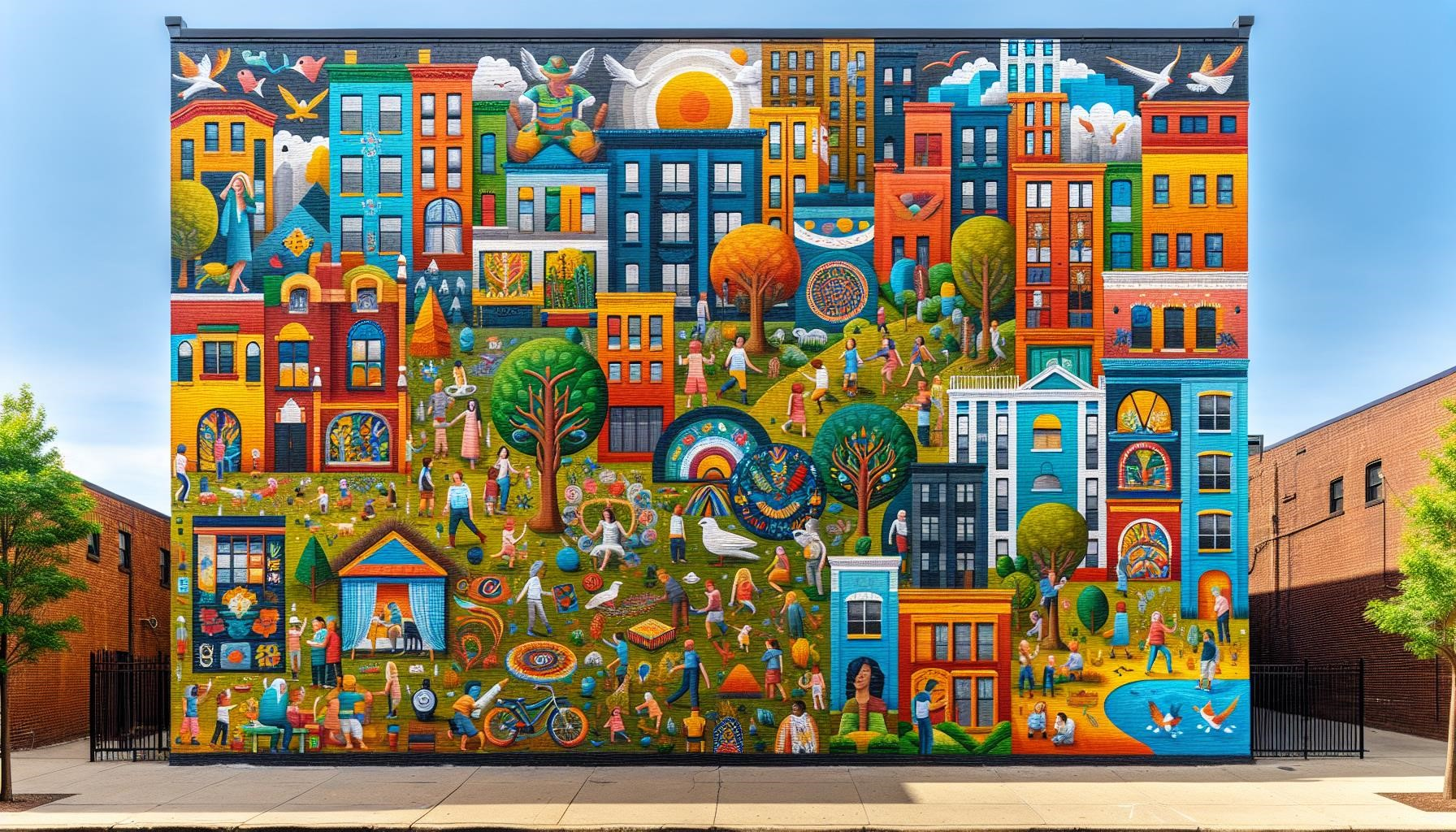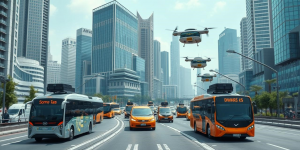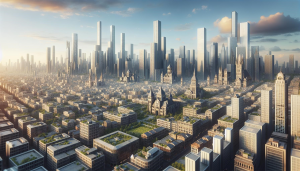Okay, let’s be real. “Urban revitalization” can sound… well, sterile. Think concrete jungles, a swarm of cranes, brand new condos popping up everywhere, and those perfectly-manicured green spaces. But what actually breathes life back into a neighborhood? What gives it that spark, that soul? In my experience? It’s often the unexpected jolt of public art that does the trick.
I’m Julian Vance, an urban designer. I’ve spent years knee-deep in revitalization projects, from Chicago’s grid system to the ever-changing streets of countless other American cities. I’ve witnessed firsthand how strategically-placed art installations can completely transform a space. They can foster a sense of community, even jumpstart economic development. It’s not just decoration, folks. It’s a catalyst.
Art as Urban Remedy: A Look Back
The idea of using public art to improve city life isn’t exactly new. Remember the “City Beautiful” movement from the late 1800s and early 1900s? Those grand civic buildings, those massive sculptures – the whole point was to inspire civic pride and make city living… better. But here’s the thing: it was often a top-down approach. Imposed on the community, rather than growing organically from it. Today, we’re seeing a shift. A move toward art that’s more inclusive, more reflective of the local culture, and more responsive to the actual needs of the people who live there.
Public Art: It’s More Than Just a Pretty Picture
Forget the image of just statues sitting in parks. Public art is a whole universe of possibilities. Think:
- Murals: Huge paintings splashed across buildings. They often tell stories about local history, culture, or even tackle tough social issues.
- Sculptures: Art in three dimensions. From wild abstract shapes to figures that look incredibly real.
- Interactive Installations: Art you can play with. Encouraging people to touch, explore, and engage.
- Light Installations: Using light itself as the art. Creating awesome visual experiences, especially at night.
- Street Art: Sometimes unsanctioned, but often bursting with creativity and making you think. Found in unexpected places.
The secret? Context. What kind of art will truly speak to the community? What will tell their story? What can turn a forgotten, sad corner into a place of pride?

Bridging Divides: Community, Art, and Cohesion
One of the coolest things about public art is how it can bring people together. When residents are part of choosing or even creating a piece, it becomes a shared thing. A source of pride, a sense of ownership. You can make this happen through:
- Community Workshops: Getting everyone in the neighborhood to share their ideas for public art.
- Artist Residencies: Bringing artists to live and work in the community, collaborating with residents.
- Youth Programs: Getting young people involved in making public art. Giving them skills, a sense of purpose, and a voice.
I’ll never forget this project in a Chicago neighborhood that was really struggling with gang violence. We set up a series of workshops where residents – even former gang members – worked with an artist to design a mural. It told their shared story, their hopes for the future. The whole process was life-changing. It sparked conversations, built bridges between different groups who normally wouldn’t talk to each other. The mural became a symbol of hope. Proof that art can truly heal and unite.
Show Me the Money: Art’s Economic Impact
Okay, so the social and cultural benefits of public art are pretty obvious. But its economic impact? Often overlooked. Here’s the deal: a well-placed art installation can:
- Draw Tourists: Bring visitors to the area, which helps local businesses thrive.
- Boost Property Values: Make the neighborhood more appealing, increasing home values.
- Create Jobs: Provide opportunities for artists, builders, and other creative folks.
- Improve the Vibe: Make the area more attractive to businesses and investors.
Think about Bilbao, Spain. The Guggenheim Museum completely transformed the city’s image and its economy. Or, closer to home, the High Line in New York City. This repurposed elevated railway is now a major tourist spot and has fueled development in the surrounding neighborhoods.
Walking the Line: Avoiding Gentrification
We have to talk about the potential downsides here. Urban revitalization – and public art’s role in it – can sometimes lead to gentrification. This means long-time residents get pushed out, and the unique character of the neighborhood gets lost. We need to be aware of this and take steps to prevent it:
- Affordable Housing: Make sure there are affordable places for low-income residents to live.
- Community Land Trusts: Create community-owned land trusts to keep housing affordable and prevent displacement.
- Rent Control: Implement policies to protect tenants from huge rent increases.
- Support Local Artists: Hire local artists to create public art. This makes sure the work reflects the community’s identity and values.
The goal is revitalization that helps everyone, not just a privileged few. Public art should empower, not displace.
Art in Action: Case Studies
Let’s check out a few examples of public art projects that really nailed it:
- Philadelphia’s Mural Arts Program: This program has transformed the city with thousands of murals. They tackle social issues and celebrate local culture.
- Denver’s 1% for Art Program: This program sets aside 1% of the budget for capital improvement projects for public art. This ensures that art is built into the city’s infrastructure.
- The BeltLine in Atlanta: This project is turning a former railway corridor into a network of parks, trails, and public art installations. It connects different neighborhoods and creates new economic opportunities.
Time to Act: Let’s Embrace Art
Public art isn’t a luxury. It’s a must-have for creating vibrant, strong, and fair cities. It’s not just about making things look pretty. It’s about building community, bringing people together, and boosting the economy. So, let’s embrace the power of art to transform our cities. Let’s support artists, involve residents, and create public art that reflects the unique spirit and dreams of our communities.
Let’s make our cities not just livable, but truly inspiring.


